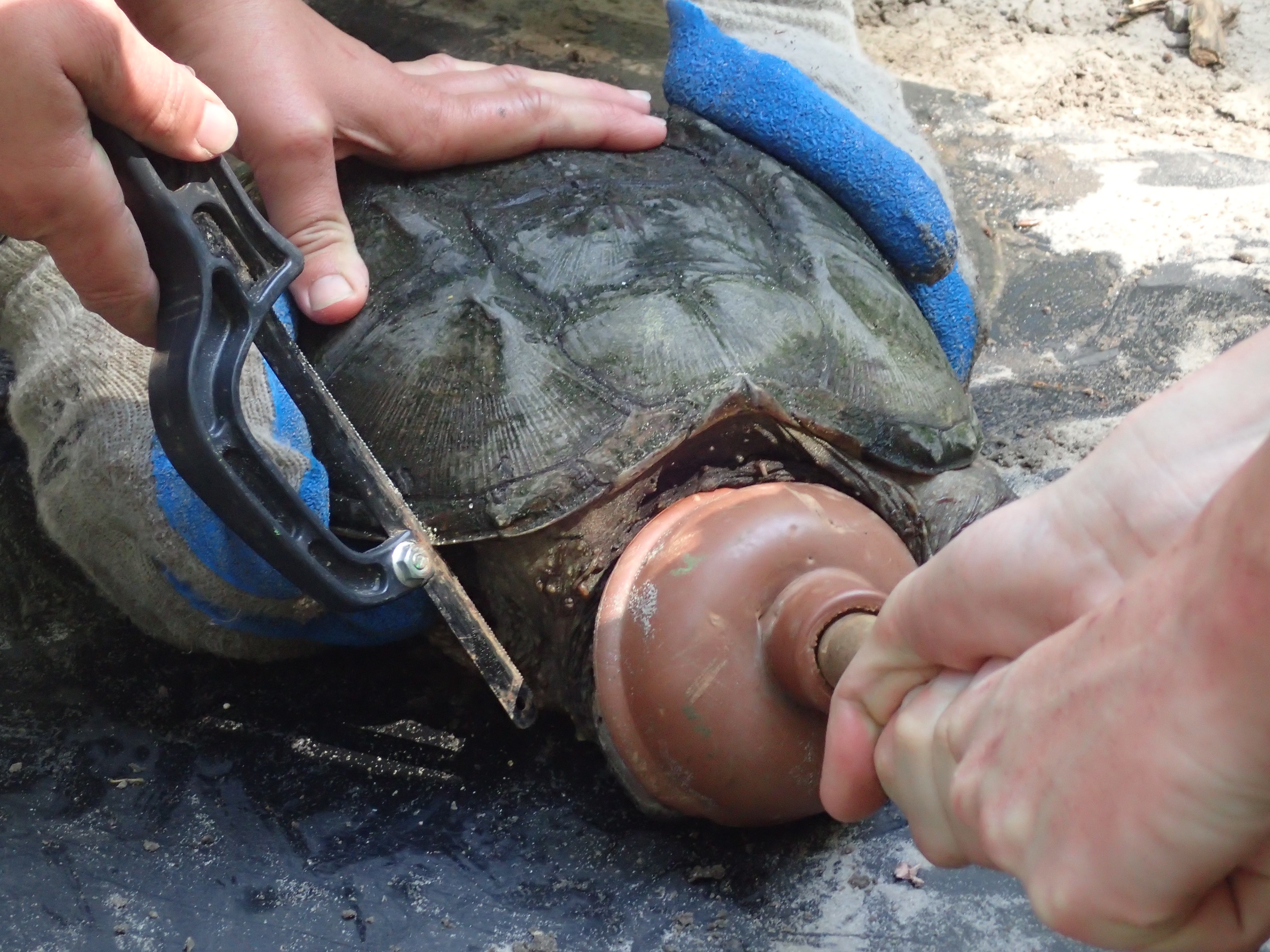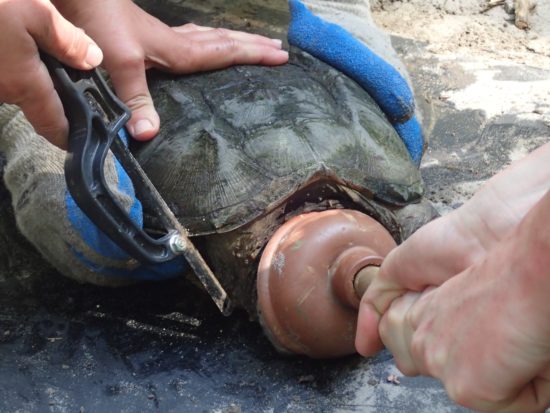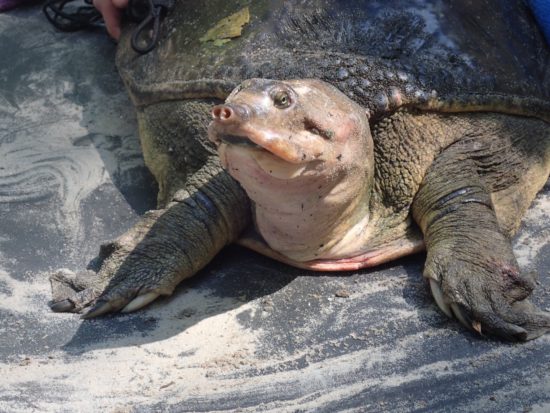
By Judah Breitbach


Professor Brian Hauge’s “wootie woo” might be mistaken for a bird’s call, albeit a bird that’s slightly off- key, but rather, the distinctive call is meant to gather and silence students.
It seems to work as Hauge rallies students every year under the banner of the North American Freshwater Turtle Research Group, NAFTRG.
“We went to Weeki Wachee springs state park, Manatee springs, and other locations. The manatees just show up and get in the way,” says Hauge, “We’re really there for the turtles, but the students are crazy about the manatees.”
The Manatees aren’t the only thing that gets in the way. There’s a densely growing grass at the bottom of the lagoons and rivers that Hauge feels may be pressing
the Musk Turtle for space, thusly forcing their population to move closer to the water’s surface for food.
“The vegetation is changing, so the species that interact with the vegetation are changing,” Hauge says of the shifting environment in the Springs, one of the most densely populated with freshwater turtles in the world.
A poster outside Hauge’s office evangelizes passersby on the importance of turtle population as an indicator of a regional ecosystem. The Auburn University graduate and the six Pirate student scientists, as well as two Western Washington University Huxley college students, noticed that the Musk Turtle in particular may be in decline.
“That’s something my students and I are going to try to get a handle on,” Hauge said. “We’re going to take data from all the way back from 2000 until now, and look at the number of captures over that given period of time to document that the numbers are lower. Because they are definitely lowering for the Musk Turtle.”
The pilgrimage to turtle mecca is an annual one for Hauge. He’s been taking students to Central Florida for the research project for many years. The site is one of many for the NAFTRG. Others include freshwater turtle habitat in Pennsylvania, Tennessee, and Texas.
Even Doctors have heroes. Hauge meet with long- time mentor and confessed role model when it comes to turtle research, John Iverson, professor of biology at Earlham University, Indiana. “This is a perfect op- portunity, a perfect location in which we can do turtle research,” Iverson mentioned to the ‘Orlando Sentinel.’
